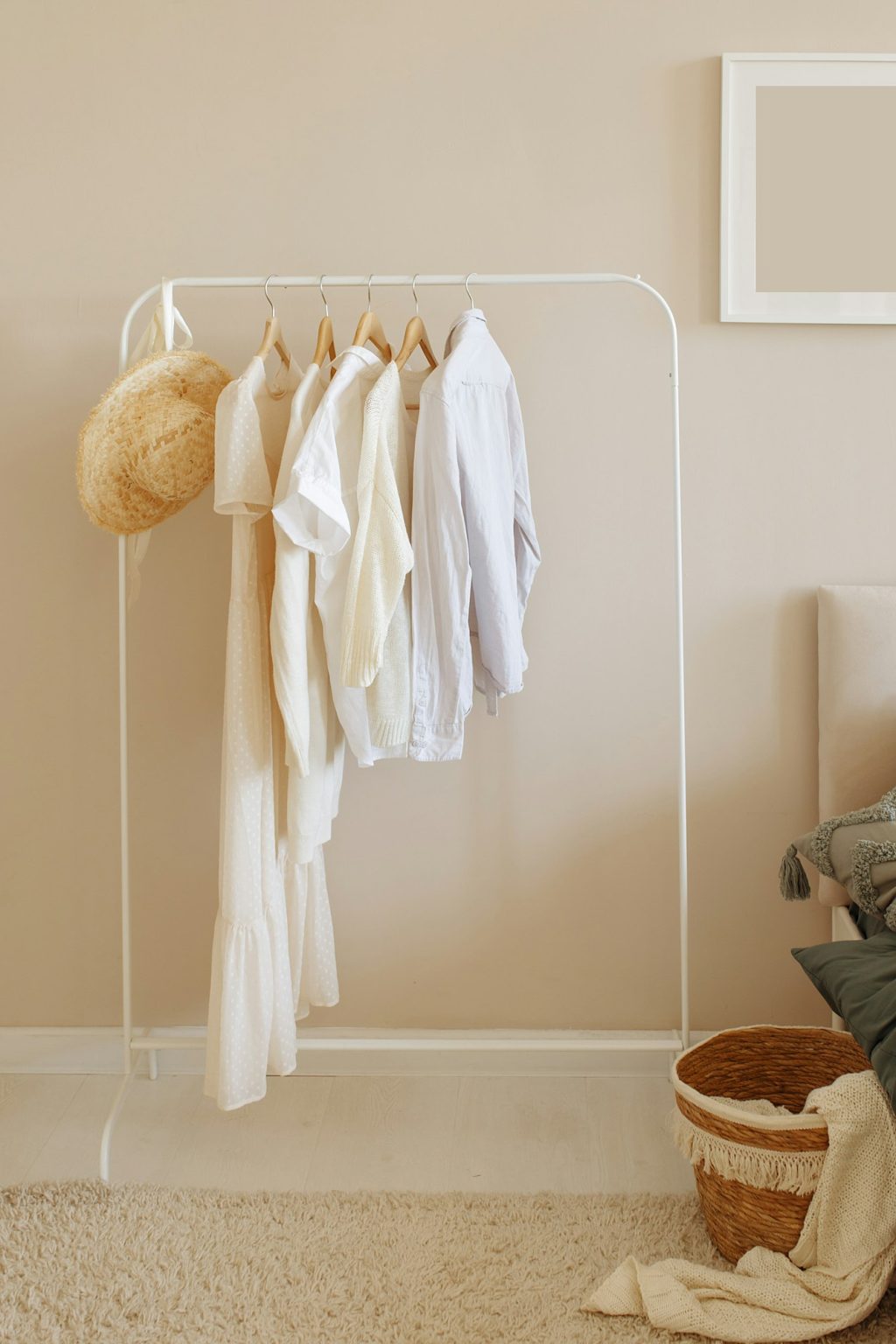
Minimalistic fashion clothes on a hanger
Clothes are garments worn to cover and protect the body. Clothes serve multiple functions, including insulation, decoration and protection from weather elements like insects or weapons or hazardous chemicals such as the sun. Cloth may be made of various materials including animal skins, plants leathers fur silk wool cotton nylon or synthetic materials – depending on its purpose –
Clothing has long been part of human culture. In many societies around the globe, clothing serves as an expression of status, wealth and taste.
People gain 93% of information about an individual from nonverbal communication channels such as body language and appearance. When dressing appropriately for any given event – such as interviews, meetings with clients or business associates, or other important gatherings – dress can create a strong first impression and help form positive associations between an individual and others. This holds especially true during interviews or formal business events like interviews.
Early in development, children are taught about their various parts and how to dress themselves. Through songs, books, and other media forms they become acquainted with clothing words and concepts as well as beginning dressing independently at around age two or three with parent assistance initially; eventually though they want to do it without help and this provides invaluable opportunities to build motor skills such as buttoning their shirts or tying their shoes independently.
Wearing inappropriate or dirty clothing can give the wrong impression of an individual, making them appear dishonest, rude and aggressive – possibly leading to lost opportunities or even the job they desire. This may impact their reputation negatively and cause them to miss out on opportunities they otherwise would have had access to.
Clothes should be made of natural or synthetic fabrics that allow airflow, keeping you cool and comfortable, while shielding you from sun, wind, rain and snow. Clothes should allow movement but should not be too loose as to cause health issues such as chafing or being caught on objects; additionally they must fit comfortably – featuring fitted sleeves and waists so they do not ride up or pinch you!
A polo shirt is a casual shirt made of light cotton fabric with short sleeves and a collar, usually featuring light embroidery or print designs. Jeans are trousers made of denim fabric which traditionally come in blue colors; other colors may also exist. A jacket features long sleeves with a front that closes up around the chest or hips; there are different jacket styles to choose from; while hoodie sweatshirts have hoods designed to cover heads for warmth or fashion; scarves can also be wrapped around necks or shoulders for warmth or decoration purposes – both have long lengths of fabric which allow you to stay warm or decorate yourself during these articles This article makes use of some key terms from our glossary:





